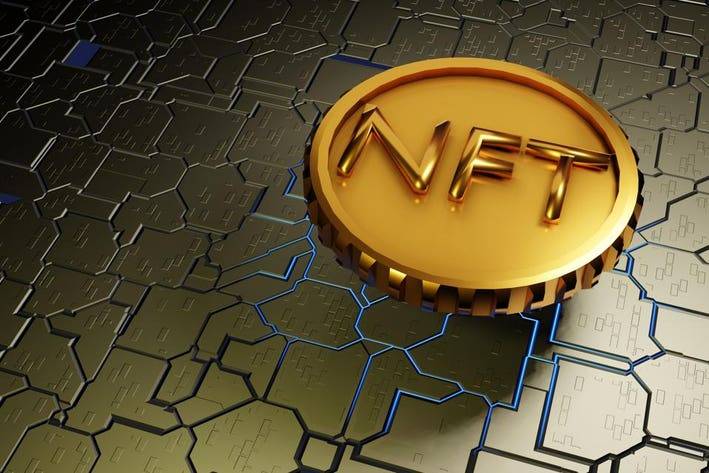THE RISE OF NFTS: UNDERSTANDING NON-FUNGIBLE TOKENS AND THEIR INVESTMENT POTENTIAL
In the world of cryptocurrency and blockchain technology, one trend has captured the attention of art enthusiasts, collectors, and investors alike: Non-Fungible Tokens (NFTs). The meteoric rise of NFTs has been nothing short of astonishing, transforming the way we perceive ownership, art, and digital assets. This unique and innovative concept has opened up a plethora of investment opportunities for those willing to explore the uncharted waters of the digital realm.
What Are NFTs?
To understand the concept of NFTs, we first need to grasp the idea of fungibility. Fungibility refers to the interchangeability of assets of the same type. For instance, one US dollar can be exchanged for another, and the value remains the same. In contrast, non-fungible assets have unique properties, making them distinct from one another, and their value can vary significantly.
NFTs are cryptographic tokens that represent ownership of a unique item or piece of content, such as digital art, music, videos, virtual real estate, virtual goods in games, and more. Each NFT is indivisible, irreplaceable, and cannot be exchanged on a one-to-one basis like cryptocurrencies such as Bitcoin or Ethereum.
How Do NFTs Work?
NFTs are typically built on blockchain networks, with Ethereum being the most prominent platform for NFT creation. Ethereum's blockchain allows developers to create and manage these tokens using smart contracts. Smart contracts are self-executing contracts with the terms directly written into code. They enable automatic verification, execution, and enforcement, making them ideal for managing NFT ownership.
Once a digital asset is tokenized into an NFT, it can be bought, sold, or traded on various online marketplaces that support NFT transactions. These marketplaces leverage blockchain technology to ensure the authenticity, provenance, and ownership of the digital assets. This level of transparency and traceability is one of the key factors that have fueled the NFT boom.
The Appeal of NFTs
Digital Ownership: NFTs offer a unique way of owning digital content. Previously, digital files could be easily copied and shared without any attribution to the original creator. NFTs solve this problem by providing proof of ownership and authenticity on the blockchain, giving creators the ability to monetize their work and collectors the satisfaction of possessing a one-of-a-kind item.
Scarcity and Exclusivity: The concept of scarcity plays a vital role in the value of NFTs. When a limited edition NFT artwork or collectible is released, the scarcity of the item drives demand, often leading to significant price appreciation. Collectors are drawn to the exclusivity and rarity of these digital assets.
New Avenues for Creators: NFTs have unlocked new revenue streams for creators and artists. They can now directly sell their work to a global audience without the need for intermediaries like galleries or auction houses. Additionally, artists can earn royalties from secondary sales, ensuring a continuous stream of income from their creations.
Investment Potential and Risks
The investment potential of NFTs is undeniable, as evidenced by the multi-million dollar sales of digital art and collectibles. However, potential investors should approach this market with caution, as it is relatively new and can be highly speculative.
Pros:
High Growth Potential: The NFT market has witnessed exponential growth over a short period. Early adopters and investors in popular NFT projects have seen substantial returns on their investments.
Diversification: NFTs offer investors a unique opportunity to diversify their portfolios beyond traditional assets like stocks and real estate. This diversification can help reduce overall investment risk.
Cultural Impact: NFTs are revolutionizing the art and gaming industries, among others. Investing in NFTs can be seen as supporting innovation and the advancement of digital art and culture.
Cons:
Market Volatility: The NFT market can be highly volatile, with prices of digital assets experiencing rapid and unpredictable fluctuations. Investors must be prepared for significant price swings.
Lack of Regulation: The NFT space is still relatively unregulated, which leaves it susceptible to potential scams, fraud, and market manipulation.
Tech and Security Risks: As NFTs are primarily built on blockchain technology, investors must be aware of the potential for technical vulnerabilities and security breaches.
Conclusion
The rise of NFTs has brought about a paradigm shift in the way we perceive, buy, and sell digital assets. With their ability to revolutionize ownership and monetization, NFTs have opened up exciting possibilities for creators, collectors, and investors alike. However, as with any investment opportunity, caution and due diligence are essential. As the NFT market continues to evolve and mature, it will be fascinating to see how this groundbreaking technology shapes the future of digital ownership and investment.


